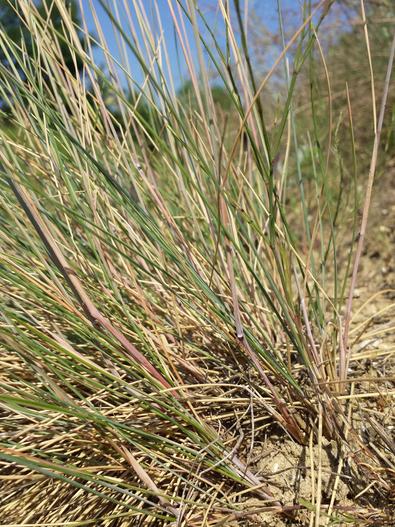Sheep’s Fescue
(Festuca vaginata)
Sheep’s Fescue (Festuca vaginata)
/
/

Stefan.lefnaer
CC BY-SA 4.0
Image By:
Stefan.lefnaer
Recorded By:
Copyright:
CC BY-SA 4.0
Copyright Notice:
Photo by: Stefan.lefnaer | License Type: CC BY-SA 4.0 | License URL: https://creativecommons.org/licenses/by-sa/4.0 | Uploader: Stefan.lefnaer | Publisher: Wikipedia Commons



























Estimated Native Range
Summary
Festuca vaginata, commonly known as Sheep’s Fescue, is a perennial grass native to open grasslands and rocky outcrops in Central and Eastern Europe. It typically grows to a height and width of 0.5-1 feet (0.2-0.3 meters), forming dense tufts of fine, blue-green foliage. Sheep’s Fescue is a cool-season grass, with a growth rate that peaks in the spring and fall. It is valued for its drought tolerance and ability to thrive in poor soils.
Sheep’s Fescue is often used in low-maintenance lawns, meadow gardens, and as erosion control on slopes due to its dense, mat-forming habit. It is also utilized in green roof plantings because of its low water requirements and resistance to extreme conditions. This grass is suitable for xeriscaping and can be used to create a naturalistic landscape. It prefers well-drained soils and can tolerate a range of soil types, from sandy to clay. While it does best in full sun, it can also handle part shade. Sheep’s Fescue is generally disease-resistant, but it can suffer from rust in humid conditions. It is not known for aggressive roots or significant pest problems.CC BY-SA 4.0
Sheep’s Fescue is often used in low-maintenance lawns, meadow gardens, and as erosion control on slopes due to its dense, mat-forming habit. It is also utilized in green roof plantings because of its low water requirements and resistance to extreme conditions. This grass is suitable for xeriscaping and can be used to create a naturalistic landscape. It prefers well-drained soils and can tolerate a range of soil types, from sandy to clay. While it does best in full sun, it can also handle part shade. Sheep’s Fescue is generally disease-resistant, but it can suffer from rust in humid conditions. It is not known for aggressive roots or significant pest problems.CC BY-SA 4.0
Plant Description
- Plant Type: Grass
- Height: 0.5-1 feet
- Width: 0.5-1 feet
- Growth Rate: Moderate
- Flower Color: N/A
- Flowering Season: Spring, Summer
- Leaf Retention: Semi-deciduous
Growth Requirements
- Sun: Full Sun, Part Shade
- Water: Medium, High
- Drainage: Medium, Fast
Common Uses
Bank Stabilization, Bird Garden, Border Plant, Deer Resistant, Drought Tolerant, Erosion Control, Groundcover, Potted Plant, Rabbit Resistant, Rock Garden
Natural Habitat
Open grasslands and rocky outcrops
Other Names
Common Names:
Scientific Names: , Festuca vaginata, Festuca dominii, Festuca ovina var. vaginata, Festuca psammophila subsp. dominii, Festuca vaginata subsp. dominii, Festuca cana, Festuca arenaria publ, Festuca cana publ, Festuca glauca subsp. buiae
GBIF Accepted Name: Festuca vaginata Waldst. & Kit. ex Willd.